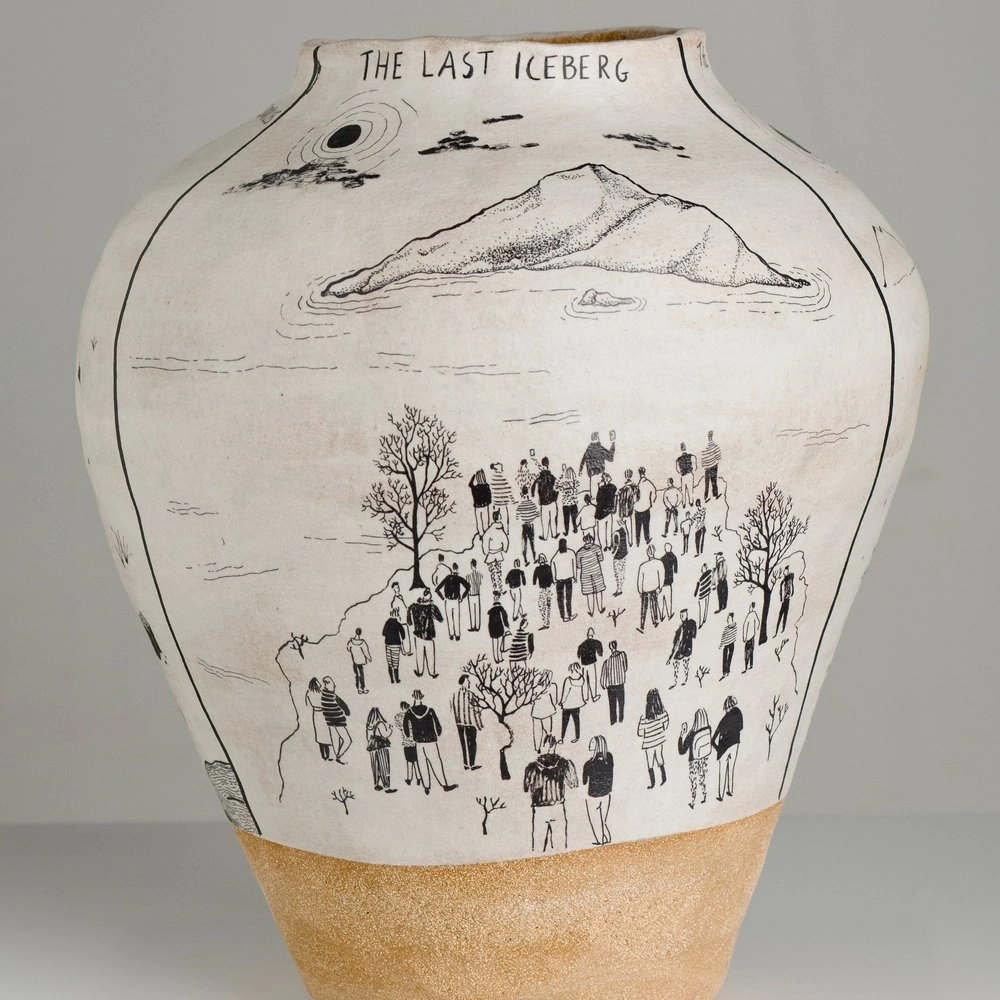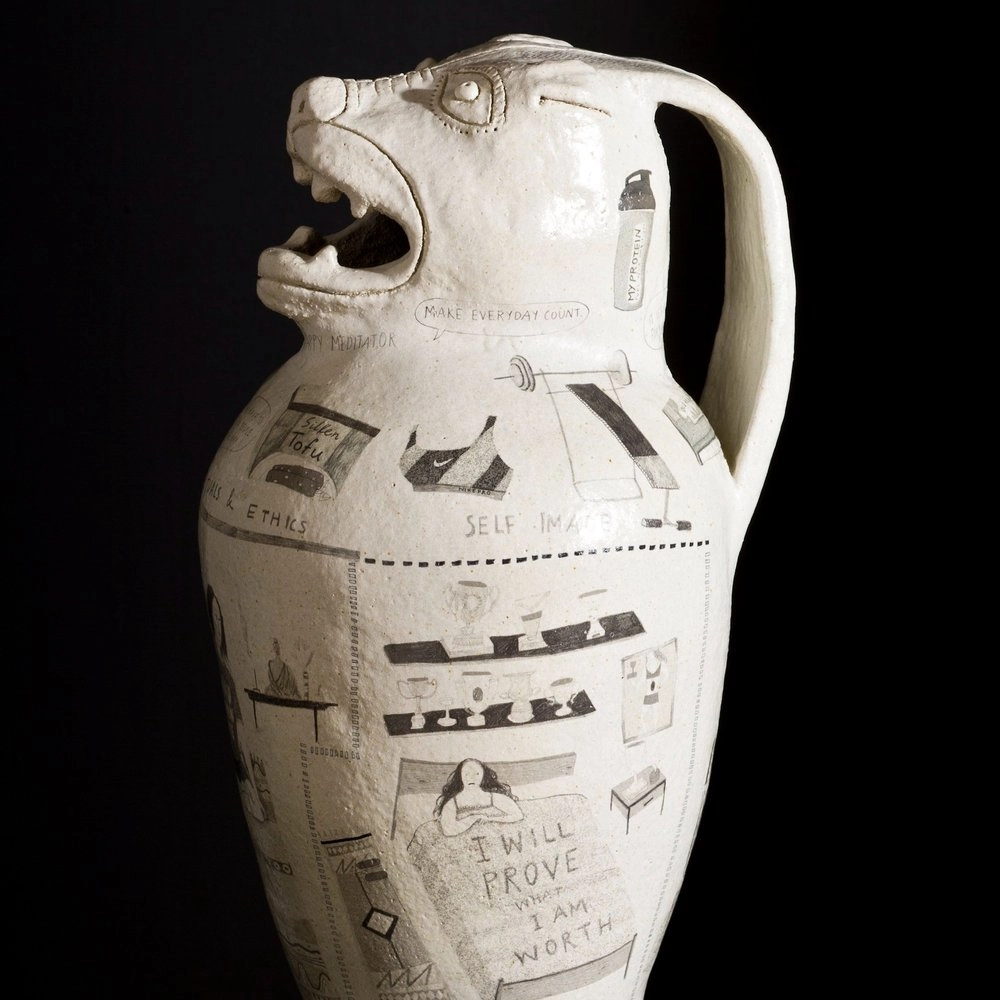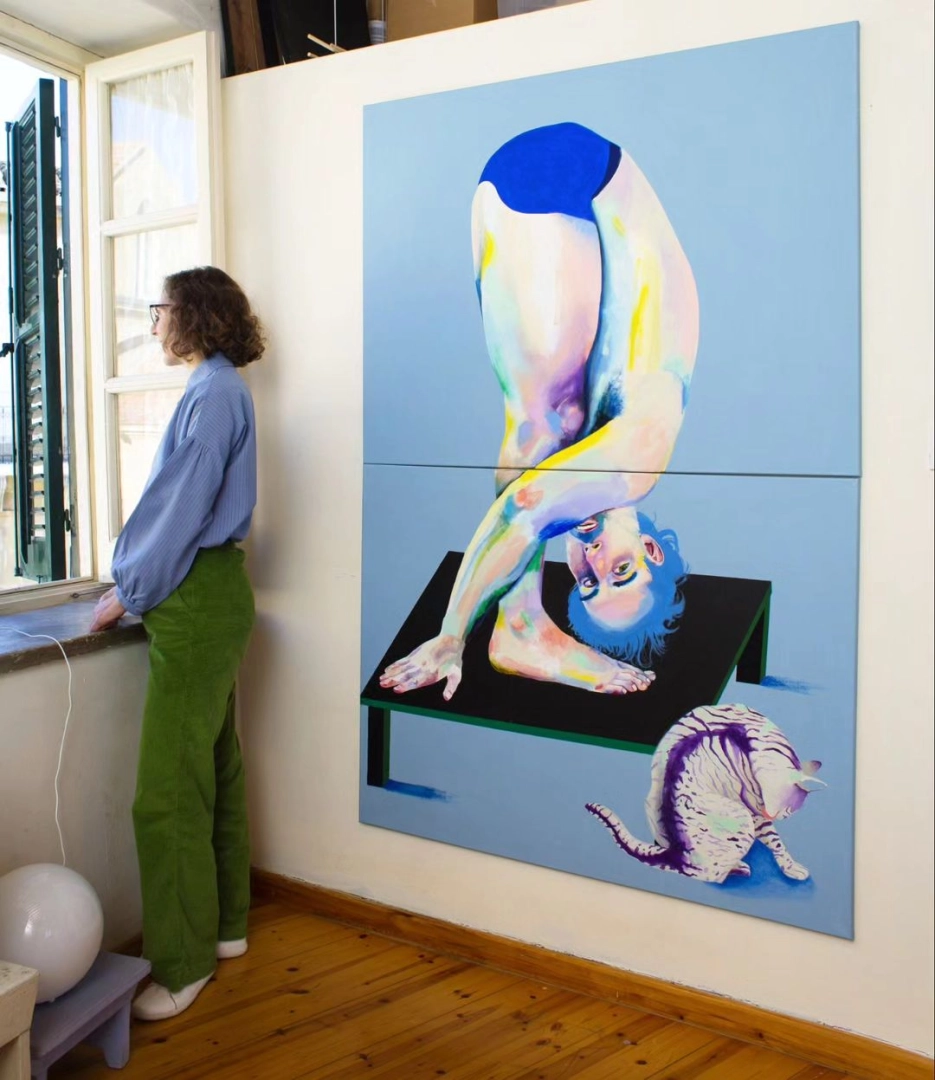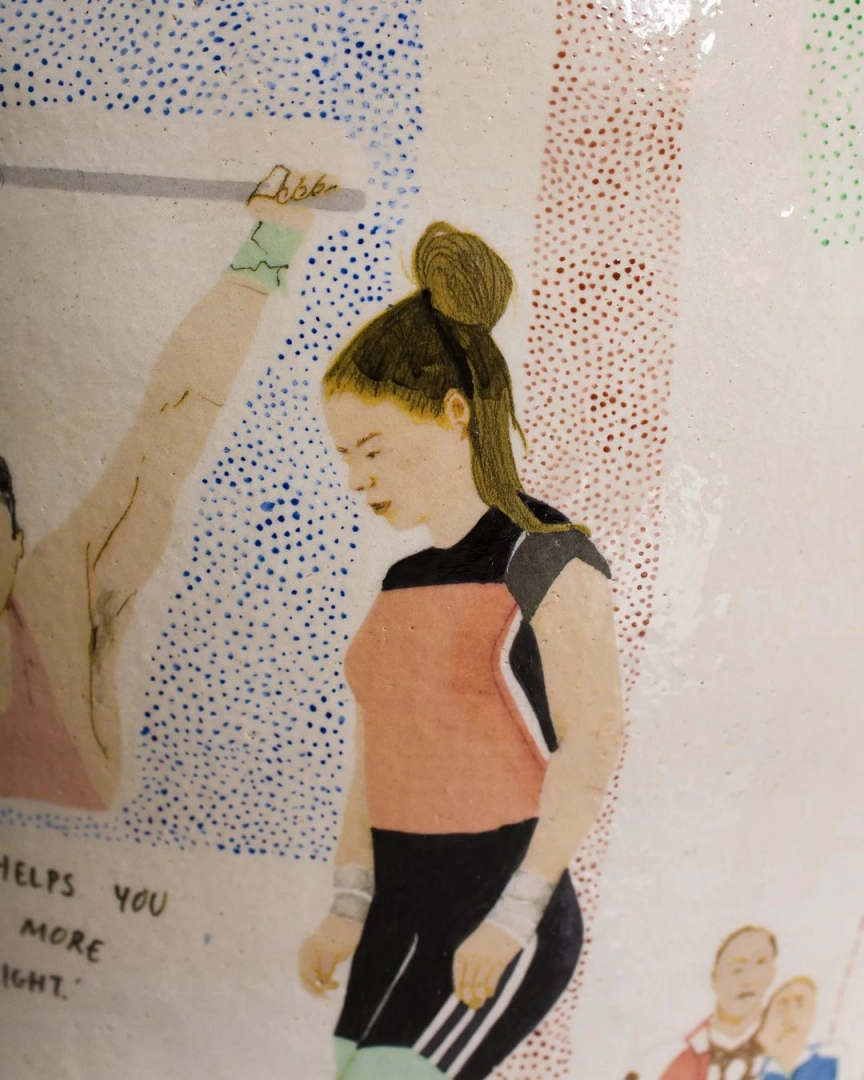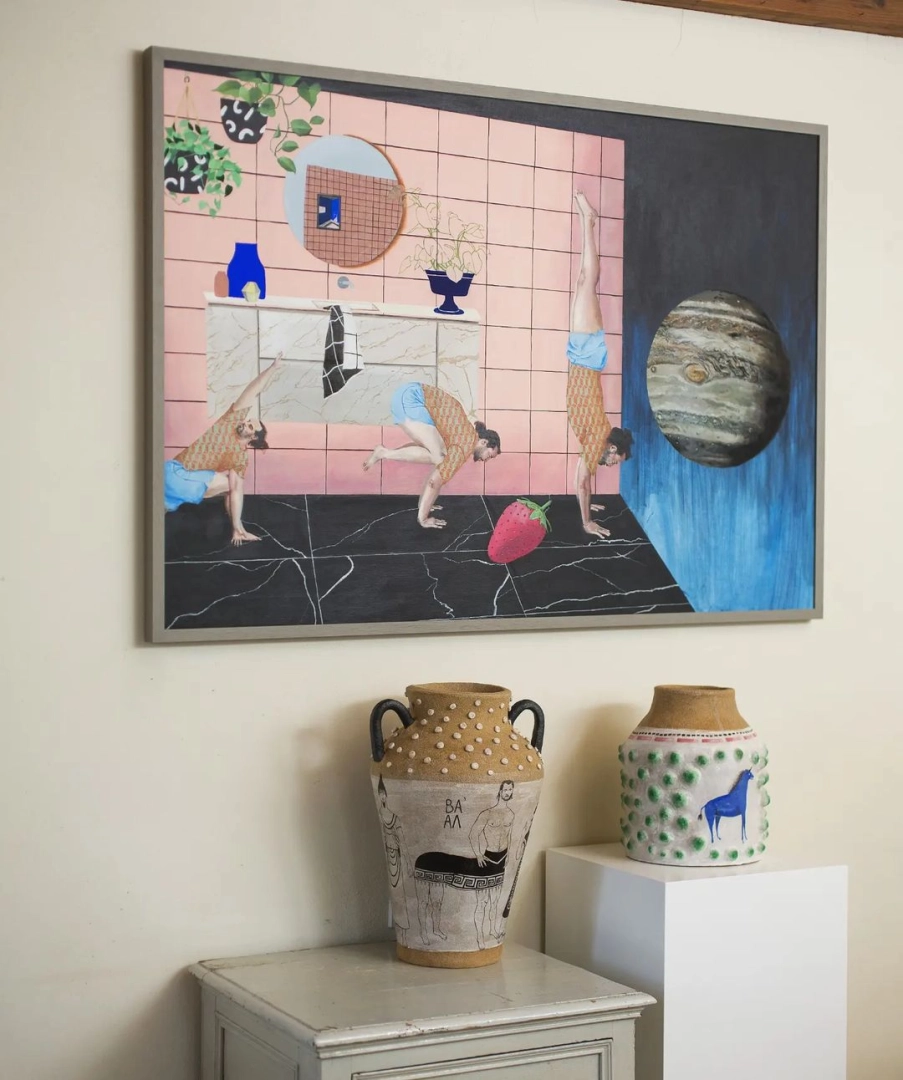Daphne Christoforou is a Cypriot visual artist whose work boldly brings ancient Greek mythology into the present, blending traditional narratives with contemporary themes through her distinctive ceramics and paintings. A graduate of the Royal College of Art in London, she transforms her passion for storytelling into vibrant illustrated vases that unfold like "ceramic picture books," capturing everything from the flawed gods of Greek legend to her own adventures in Olympic weightlifting.
In this interview, Daphne reveals what draws her to the world of myths, the joys and challenges of bringing her subjects to life in clay, how her passion for sport influences her art, and how she reaches out to the audience from her home island.
.jpg)
As a child, I was fascinated by Greek myths and legends like those of Prometheus and Hercules. I’m not entirely sure why—maybe it was because these gods behaved much like people. Your art draws upon these ancient stories—what attracts you to them, and how do they inspire your work?
Even though the Greek gods were powerful and fierce, they were also fallible, capricious, envious, and petty. Their imperfections and erratic behaviors make them easy to relate to. A prime example is Zeus himself, the top god. Despite participating in the creation of humans, he was always wary and anxious that they might overpower the Dodekatheon.
The Olympian gods were also depicted with ideal physiques and captivating symbols—such as Hermes' winged sandals and caduceus—and rendered with admirable skill. Additionally, the myths were colorful, highly imaginative, and unpredictable, often with a moral lesson at the end.
Do you think the themes and topics in these ancient stories are still relevant today?
They are relevant because they deal with archetypal issues. While the settings and characters might initially seem outlandish and bizarre, the underlying meaning is often relatable. A recurring theme is the punishable trait of excessive self-centeredness, known as hubris.
Hubris is demonstrated by countless heroes. One example is Bellerophon, an overconfident, handsome young warrior who thought himself worthy of flying up to Mount Olympus on his winged horse to dine with the gods. He was immediately struck down by Zeus' bolt, which crippled him for the rest of his life. Zeus kept the winged horse, Pegasus, for himself.
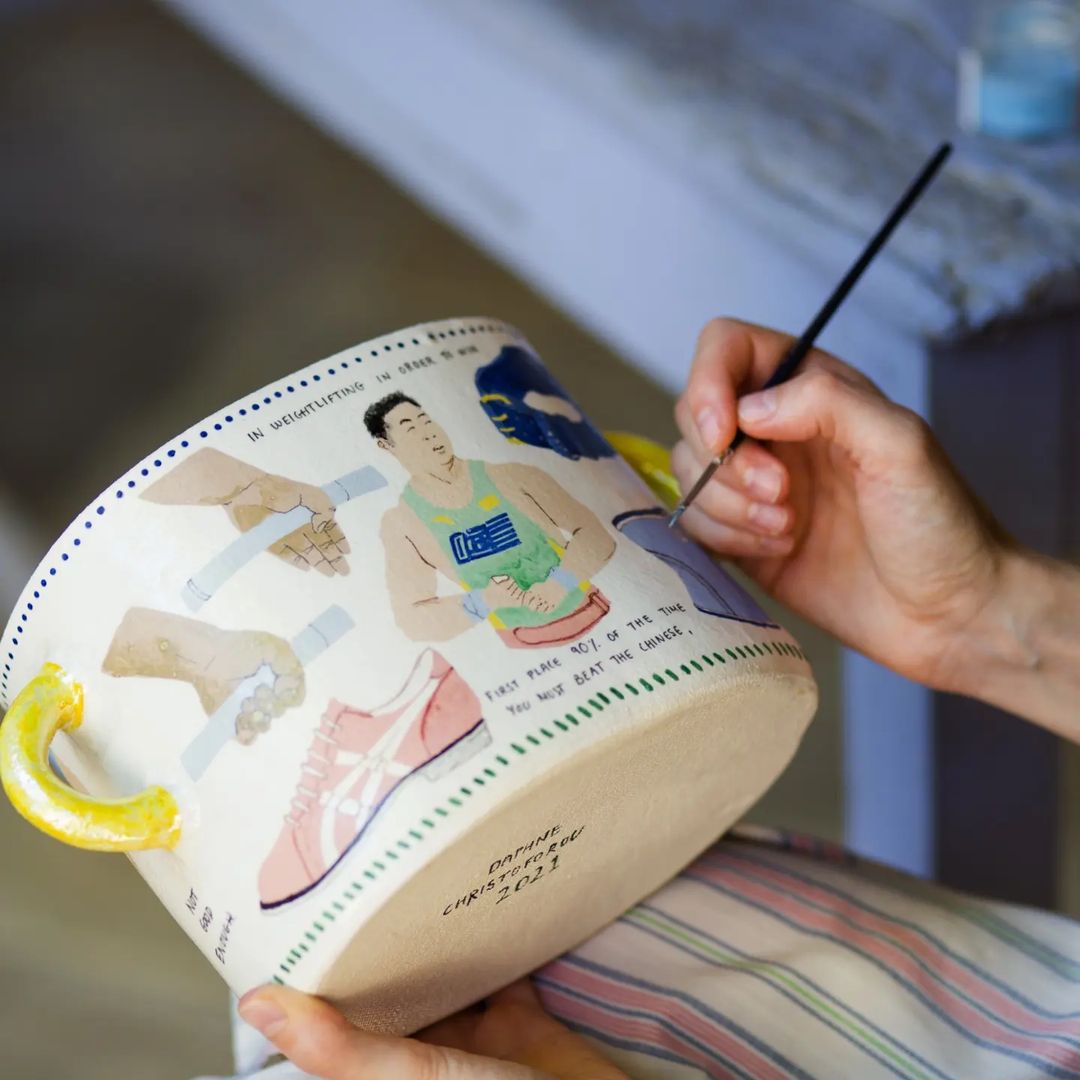
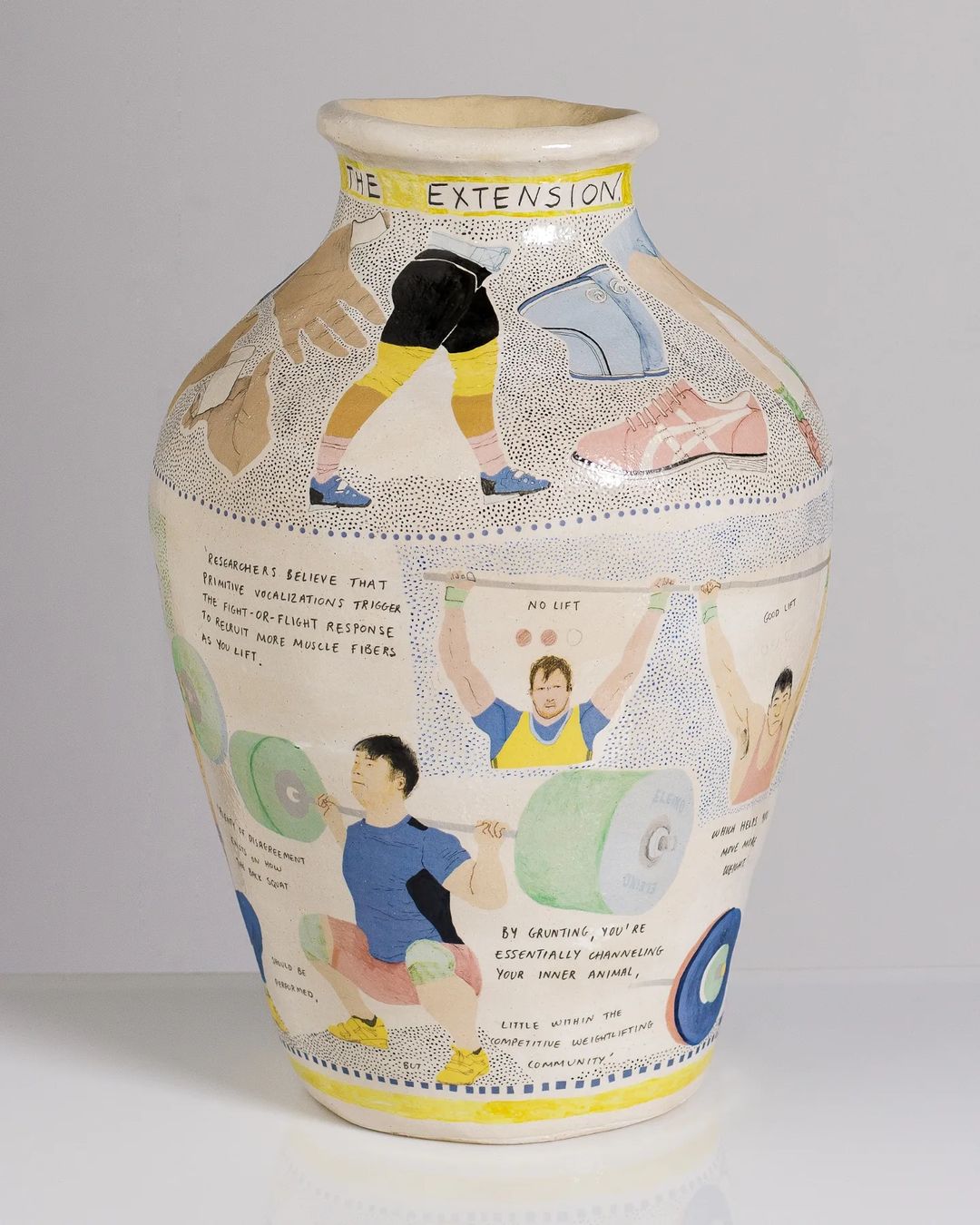
Ceramics, particularly illustrated vases, have become a signature medium for you. What is it about ceramics and vases that drew you to use them in your work?
I am interested in the historical significance that this ancient form carries. Lidded amphorae, in particular, exude nobility, demand respect, and have a commanding presence when one is near them. The pointed lid and symmetrical handles create a lofty, stern impression. Whatever is drawn on them takes on greater significance.
In ancient Greece, vessels were used to commemorate events as well as to depict myths. I enjoy borrowing these forms to express contemporary themes. The cylindrical shape works well with sequential illustrations and offers different possibilities compared to a flat painting.
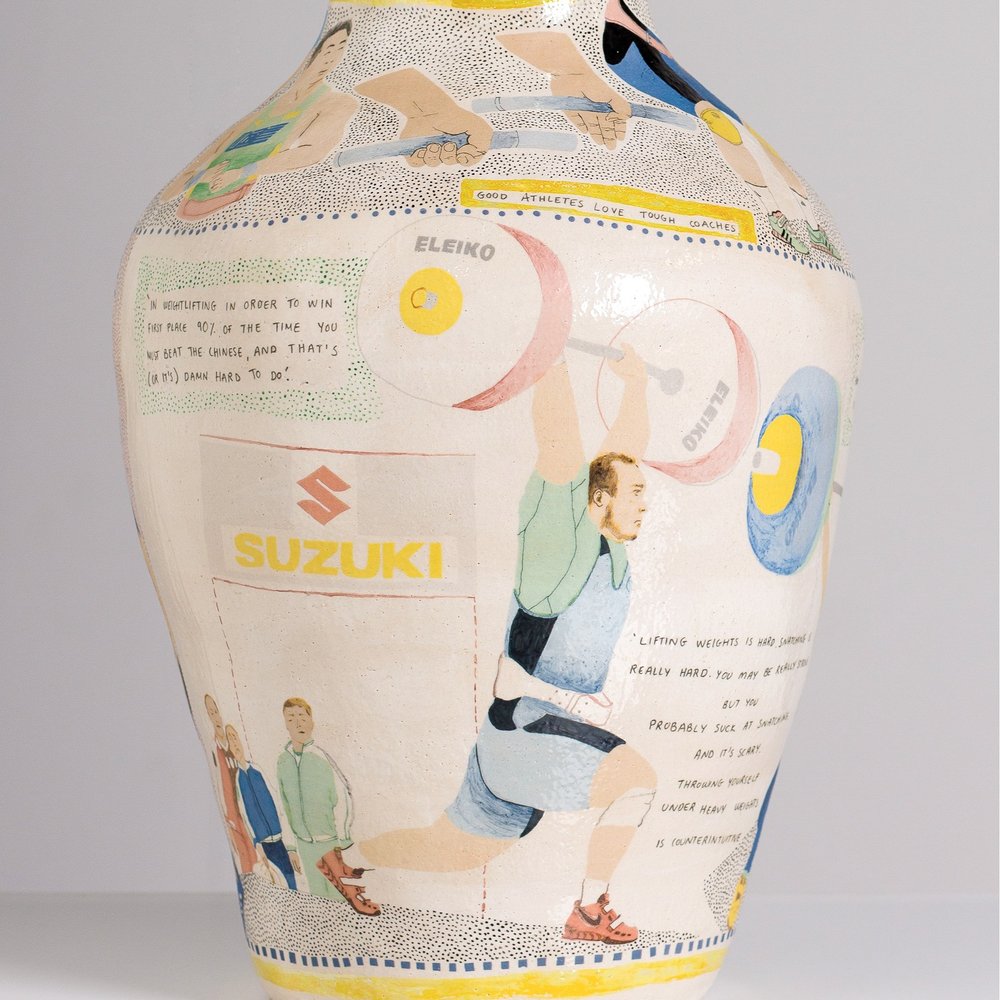
You’ve created several pieces inspired by Olympic sports, which have deep roots in Greek history. I’m curious—what’s your personal journey with sports? Have you tried any yourself?
A few years ago, I found myself accidentally learning Olympic Weightlifting. It all started when a professional gymnast began teaching a basic adult gymnastics class at my local gym. However, the class was eventually canceled because it was too challenging for the average gym-goer. I was immediately captivated by the coach's persistent attention to detail and high standards. This was a superior kind of training, and since it's not easy for laypeople to access, I tried to find another way in after the adult gymnastics class was discontinued. For me, it was more about the slow, methodical, technical coaching than the sport itself.
That’s how I discovered Olympic Weightlifting. Since the team was small, they allowed beginners to join. For weeks, the bar didn’t move past my waist. We practiced the first part of the movement—pulling the bar from the floor to the hips—over and over again.
I loved it. The coach was strict and stern, and once the weights were loaded and the technique was a bit more refined, that’s when the real challenge began. It was hard, scary; my muscles were sore and pumped. Most of the time, it felt maddening—'Why can’t I get this right?' I wondered. The snatch is the hardest thing I’ve ever had to learn.
But there were rare moments when the technique was perfect, and the weights seemed to fly effortlessly overhead. It was magical. Unfortunately, the program was canceled due to issues with doping, which is sad. These days, I have weights at home and still squat and practice some of the movements, just with less intensity.
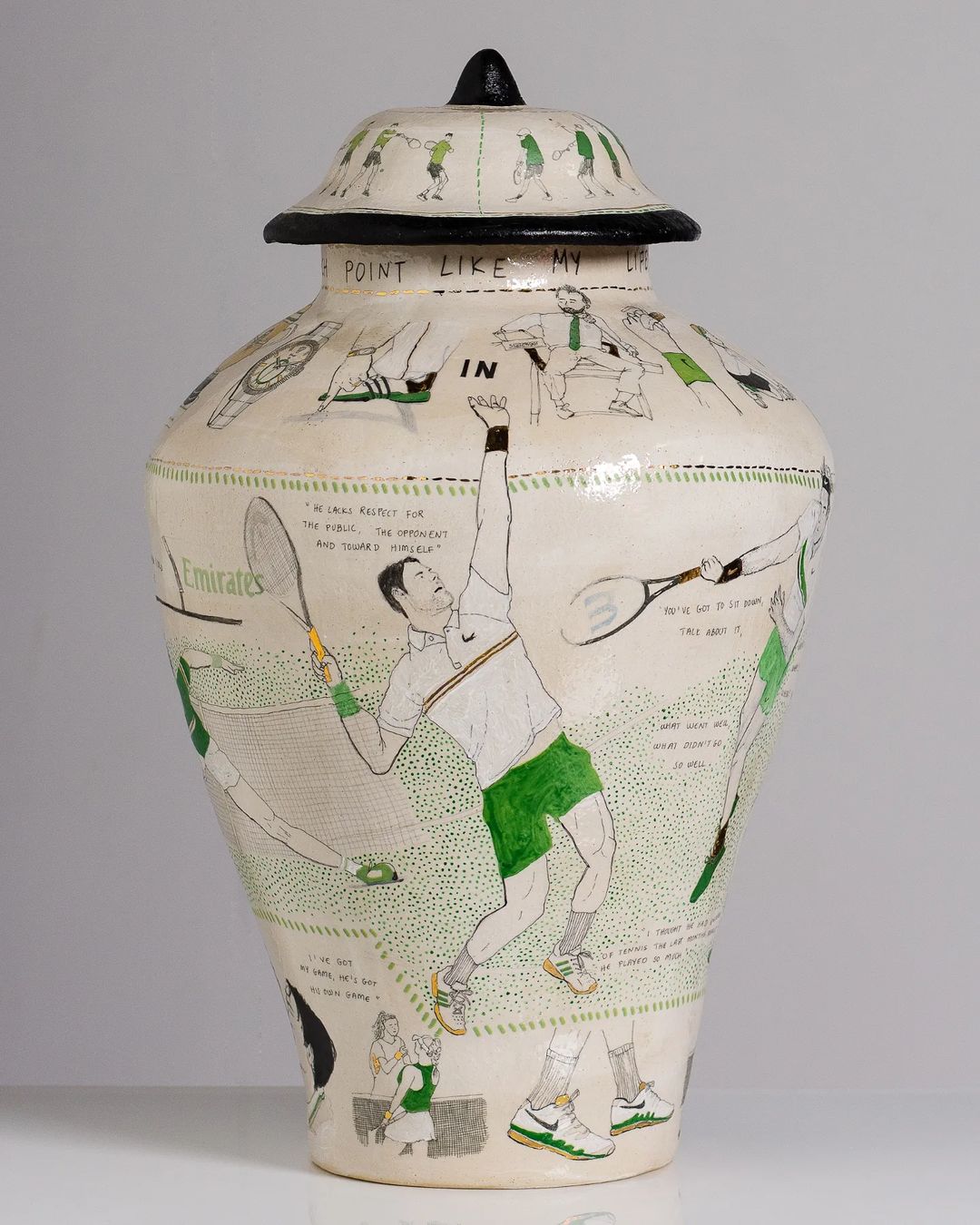
Wow, that must have been quite an exciting and intense experience! I’m sorry that it had to be canceled. What part of it left the strongest impression on you?
I love the obsessive, indefatigable dedication of professional athletes. Many sports require explosive bursts of power coupled with extreme control, and that’s what fascinates me about them. The technique is nearly impossible to perfect, and athletes are always striving to improve every tiny detail.
That’s why coaches are present at competitions, guiding them. Obviously, athletes ‘know’ the technique, but they still seek their coach’s guidance to help them perform flawlessly. What I appreciate about sports is that athletes never dismissively say, ‘Yeah, yeah, I know,’ like most people do when their technique is questioned. They remain open to advice and criticism from their coaches, which leads to better results. This attitude inspired me to create the Olympic Weightlifting and Tennis Vases.
Capturing the energy of sports in ceramics and paintings is quite challenging. How do you bring movement to life in your work?
There is such a wealth of sport-related visual references to draw from. I believe some drawings are more successful at depicting a sense of motion than others. Observing visual references, such as photos and videos, and understanding the movement are key to conveying it in the drawing. The bright colors of sportswear, logos, and the geometric shapes of fields, courts, and tracks are also attractive elements to incorporate.
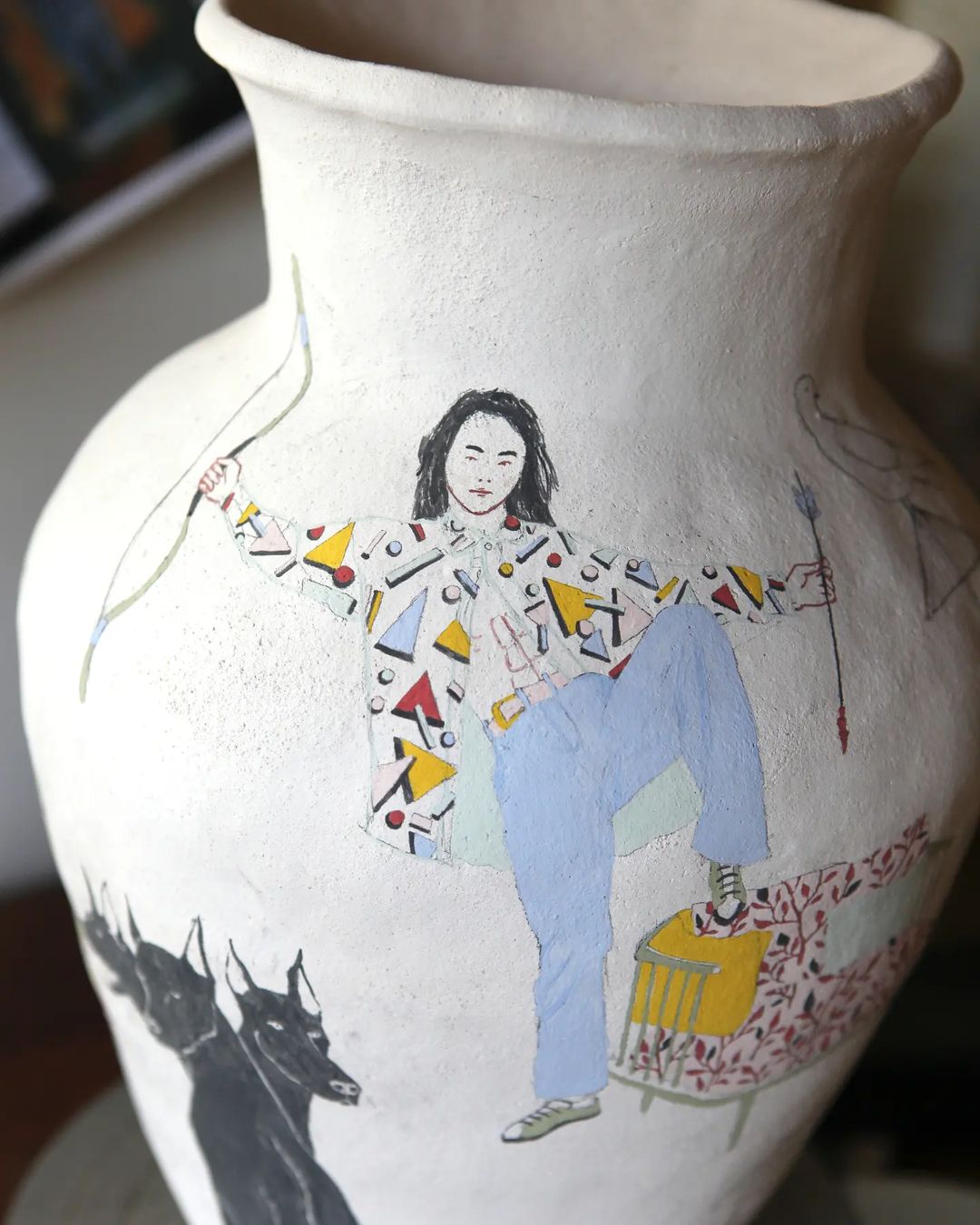
Your Instagram offers followers a behind-the-scenes look at your creative process. How does sharing your work on social media influence your artistic process, and what kind of feedback do you find most valuable from your audience?
Documenting for social media often feels like having a second job. Especially when filming the making of a project, it’s like working on two projects at once. There have been times when I had to prioritize creating the actual piece because filming affected the quality of the artwork, as my attention wasn’t fully on it.
At the same time, social media opens the door to a worldwide audience, as opposed to the small demographic of Cyprus. Opportunities for exhibitions and projects are the most beneficial aspect of maintaining an online presence. Traveling to foreign countries and meeting inspiring, like-minded individuals often provides a much-needed push to keep going. There isn’t much of an art scene here in Cyprus, which can feel isolating, but through social media, I can connect with the right audience.
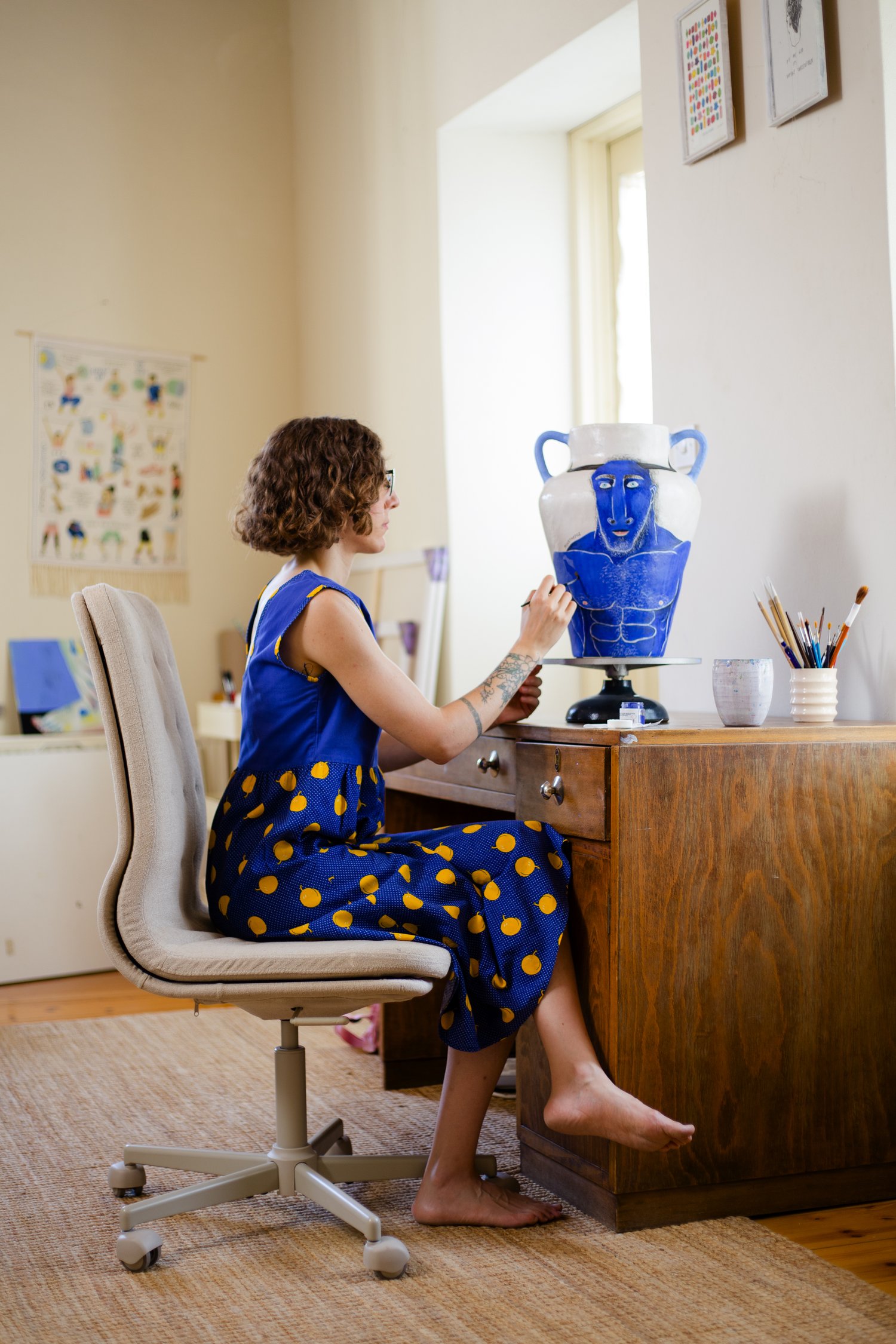
Daphne Christoforou
Visual artist from Cyprus and a graduate of the Royal College of Art, specializes in ceramics and painting. Her narrative-driven work, inspired by Greek myths and personal reflections, provides a transformative process and a means to express inner states. She has been recognized as the V&A Student Illustrator of the Year and received an Adobe Achievement Award in LA.
You can find more works on the artist's website.


